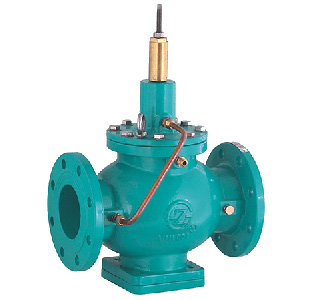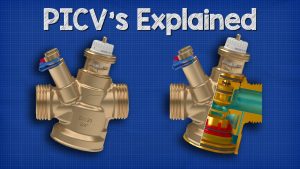To meet the growing use of variable speed pumps for HVAC applications, Hattersley has launched a range of Differential Pressure Control Valves (DPCV) specifically aimed at optimizing system performance.
What is a Differential Pressure Control Valve?
Differential Pressure Control Valves – also commonly called DPCVs – are installed in heating or cooling systems to control sub-circuit pressure to a set or given maximum.
Extremely efficient, the DPCV is set to a maximum differential pressure which ensures flow cannot exceed a desired rate. It, therefore, helps reduce energy consumption, and the risk of noise and simplifies the commissioning process.
ZECO DPCV range includes three different types. A type with pre-set ΔpC (differential pressure across the circuit), a type with adjustable ΔpC, and finally a type being a combined dynamic balancing valve and adjustable DPCV. They offer a flexible range meeting any system demand.

Differential Pressure Control Valve Working Principle
The differential pressure control valve does not need any external energy. It can automatically adjust by relying on the pressure change of the regulated medium itself, automatically eliminate the flow change caused by the residual pressure head and pressure fluctuation of the pipe network, and keep the pressure difference between the user’s inlet and outlet constant. It is especially suitable for household metering or automatic control system, which is conducive to stable system operation.
The differential pressure control valve is of double disc structure, with small unbalanced force and compact structure. It is used in the heating (air conditioning) water system to keep the differential pressure of the controlled system constant. According to the differential pressure control valve working principle, users who install the differential pressure control valve do not install the automatic control device. Under the minimum working pressure difference, when the selected pipe diameter is too large and the resistance is reduced, the flow will be too large, which will inevitably cause the hydraulic imbalance of the external network and increase the energy consumption.
The differential pressure control valve is composed of the valve body, valve cover, valve core spring, control conduit, and pressure regulator.
The valve is installed on the return pipe of the heating pipeline, and the working chamber on the valve is connected with the water supply pipe through the control pipe. Eliminate the flow deviation caused by the pressure fluctuation of the external network. When the water supply pressure P1 increases, the water supply pressure difference P1-P3 increases. The pressure sensing membrane drives the valve core down to close the small valve port, so that P2 increases, thus maintaining the constant P1-P2. When the water supply pressure P1 decreases, the pressure sensing membrane drives the valve core to move up and P2 decreases, so that P1-P2 is constant. No matter how the pressure changes in the pipeline, the dynamic differential pressure balance valve can maintain the constant pressure and flow applied to the controlled object.
Self-operated Differential Pressure Control Valve Working Principle
After the process medium is throttled by the valve, it enters the controlled equipment, and the differential pressure of the controlled equipment is respectively introduced into the upper and lower membrane chambers of the valve, generating thrust in the upper and lower membrane chambers, and balancing with the spring reaction force, so as to determine the relative position of the valve core and the valve seat, while the relative position of the valve core and the valve seat determines the size of the differential pressure value. When the controlled differential pressure changes, the balance of the force is destroyed, which drives the movement of the valve core, and the movement of the valve core changes the resistance coefficient of the valve, that is, the controlled differential pressure value is controlled as the set value. This is the working principle of the differential pressure control valve. When the differential pressure setting value needs to be changed, the adjusting nut can be adjusted.












